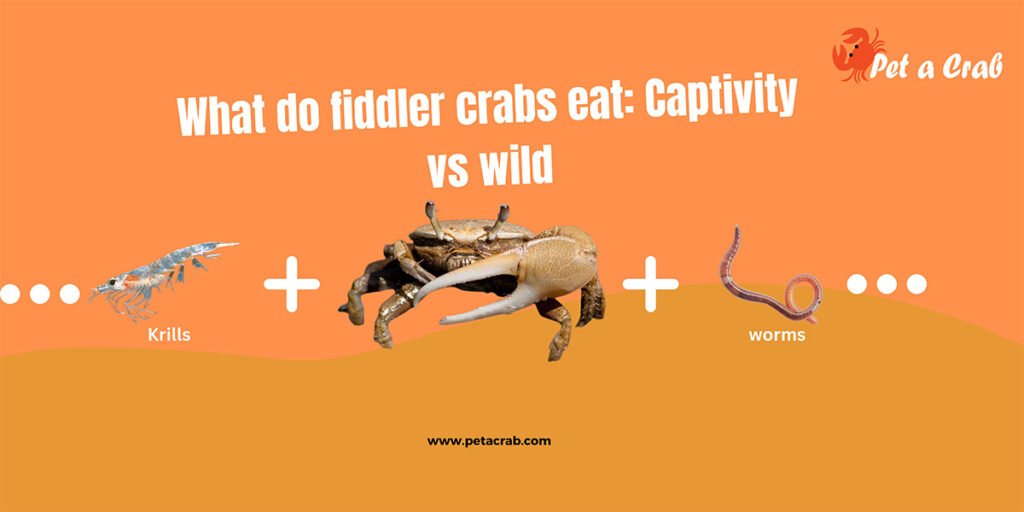Hermit crabs are twinkle toes creature that loves to play around and climb stuff. They look like they are hard to be taken care of but hermit crab care is pretty simple if follow some guides properly. It can cause significant loss if you do not know how to care or small mistakes in hermit crab care can lead to death.
Here we’ll be talking about how to care for hermit crabs, necessary things in the tank, and some misconceptions. With proper care, they can live up to 15 years.
Let’s dive into the topic.
Hermit crab tank size
Hermit crabs are little and look like they do not need much extra space. But they need plenty of space to play around that’s why they need 20 to 30 gallon tanks for 3 to 4 hermit crabs. They are very social animals which is why the more companions they get the more joyous will they look.
If you are trying new and want the big setup and lots of hermit crabs you need at least one male or one female crab and a minimum 10-gallon tank for a pair. Make sure to use a glass cover or something to cover the tank or else you may find your crab anywhere other than the tank.
Proper substrate for hermit crabs
A good hermit crab substrate needs to hold moisture for a long time, it doesn’t collapse when they dig into it, it doesn’t scratch the crab, and fungi shouldn’t grow easily. Hermit crabs need a huge amount of substrate in the tank. They dig into the substrate and stay there for a long time. So the substrate needs to be three times as deep as the biggest crab in your crabitat.
The best choice for the substrate is eco earth and play sand. Individually eco earth does well as a substrate. It can meet all kinds of needs. However, most of the experts suggest using half play sand or beach sand and half eco earth or eco earth and play sand in a one-fifth ratio. Play sand is the cheapest compared to other substrates. The substrate needs to be moistened with dechlorinated salt water.
There are some substrates such as calcium sand, peat moss, gravel/pebble, and wood shavings that many people consider good substrates. But in reality, these substrates can cause great harm to the crab.

Hiding places that are needed in the tank
Hermit crabs need some hiding places and some wood/rope stuff to climb. There is no limitation, create as many hideouts as you can, as hermit crabs keep hiding themselves most of the day.
To add climbing facilities to the enclosure, you can use a wooden bridge or ladder, coco fiber climbing carpet, climbing rope, and so on.
For hiding places wooden half-log is recommended and then use anything you want such as SpongeBob pineapple house, cave hideout, mossy cave hide, and there are countless other options.
Water requirements
Hermit crabs need two types of water freshwater and saltwater. Both waters serve different purposes and they will die with only fresh and only saltwater.
To meet the need hermit crabs need two bowls of water for salt and freshwater. Use sea salt or reef salt to make salt water. Normal edible salt won’t do the job because it contains some chemicals including iodine.
Whether it is freshwater or saltwater, both need to be dechlorinated. Chlorine is considered a silent killer for hermit crabs. The crab will seem to be okay with only freshwater or chlorine-containing water but this will kill your crabs in a few months. The water source doesn’t matter whether it is tap or bottled water as long as it doesn’t contain chlorine it is safe to use. Sometimes bottled water can contain little amount of chlorine. To know more…

Know about the diet of hermit crabs
As omnivorous scavengers hermit crabs can eat anything they can find even the substrate or their poop. So no issue with hermit crabs’ diet. But still, there are some things to consider about their diet.
Ensure they get a balanced diet with plenty of calcium and protein sources. You can feed fruits like mango, strawberries, bananas, watermelon, carrot, broccoli, capsicum etc. In molting time they need a lot of calcium to grow new exoskeletons, so give calcium-rich food like shrimp, tuna, and eggshells.
There are a lot of things to know and follow on the diet. We have a blog on the diet be sure to check out.
Proper humidity to maintain
Hermit crabs need 70% to 80% humidity. Use a mister to moisten the enclosure along with the substrate and a hygrometer to monitor and ensure the humidity keeps in this range. The water bowls also contribute to keeping humidity.
Naturally, they can’t survive in dry areas. Apart from this land hermit crabs have gills that need to always moisten to breathe that’s why they also carry water in the shell. (There are two types of hermit crabs land and marine)
Temperature requirements
75° to 85°F at day (23° to 29° C) with a fall of 65° to 75°F (18 to 24° C) at night is considered the perfect temperature for hermit crab. You can use a heating mat to keep the enclosure warm and use a thermometer to monitor the temperature.
Remember they need high temperature but not heated substrate. So stop using the heating mat at the bottom of the tank and try to place it on any of the sides.

Hermit crab light requirement
Hermit crabs do not need sunlight, UVB, or any kind of light (it doesn’t have any proven benefit). But they need a normal day-night cycle (12-12 h) a normal LED will do the job. They become active at night, so if you want to see their movement use a dark light.
Some will suggest you use a heat lamp. Hermit crabs are hermit crabs J they are not reptiles or turtles that need a heat lamp. It will zap the humidity so never use a heat lamp.
Types of shells hermit crabs need
At last, give them different sizes of shell choices. They will pick whichever they like, 3-6 extra shells for one hermit crab. Don’t use painted and glass shells. Here we talked about shells.
There may be health concerns, sometimes they may get out of the shell and keep hiding for a long time. We prefer to know more about molting.


